Your Guide to Herbs
By Laura Slatalla, Recent ASU Nutrition Student
Experimenting with new combinations and flavors is one of the joys of cooking, but a little direction for herb and spice pairings can ramp up your dishes! Encourage your family to try foods prepared and seasoned differently, especially if they are foods that aren’t well liked in your household. It may change their mind! Make use of all those spices in your cabinets and pick up some fresh herbs from the store. Meals will have more layers of complexity and be tastier, without adding more salt, butter, or oil.
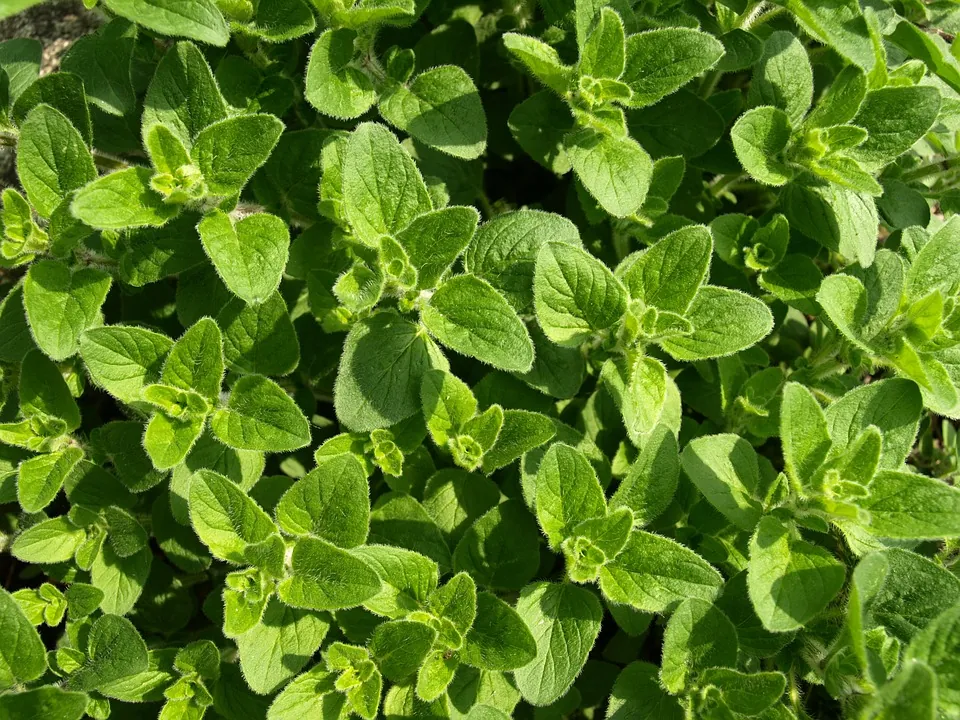
Make use of all those spices in your cabinets and pick up some fresh herbs from the store. Meals will have more layers of complexity and be tastier, too!
Garlic, lemon juice, and oil or butter are easy and tasty, but they get mundane. Here are some herb and spice pairings you can use to make your dishes pop:
Asparagus paired with tarragon or basil
Broccoli paired with oregano, basil, curry, or thyme
Carrots paired with ginger, parsley, coriander, cumin, or sage
Eggplant paired with basil, oregano, curry, rosemary, or parsley
Green Beans paired with dill, rosemary, chives, or basil
Peas paired with dill, thyme, or parsley
Potatoes paired with rosemary, sage, mint, paprika, or thyme
Spinach paired with basil, dill, chives, or nutmeg
Summer Squash paired with basil, chives, coriander, oregano, or parsley
Sweet Potatoes paired with chili, ginger, sage, or thyme
Winter Squash (acorn/pumpkin) paired with celery leaves, parsley, sage, thyme, curry, ginger, or rosemary
Let’s not forget fruit! Adding mint to fruit salad is one of my favorite things to do in the summer, but here are some more specific pairings:
Berries paired with lavender
Strawberries paired with rosemary, or sage
Mangos paired chili, or peppercorn
Peaches paired rosemary
For all kinds of delicious recipes featuring a plethora of different spices, visit the Fill Your Plate recipe section! We have main dishes, side dishes, veggie dishes, desserts, and much more!
The Do’s and Don’ts of Meal Planning
By Lauren Scott, Arizona Farm Bureau Intern
You come home from work, tired, hungry, and ready to hop into bed. Your family members start coming from all corners of the house and they all have one question ‘What’s for dinner?’ Well, no one planned dinner so it looks like its leftovers or cereal…
This is no way to live! I mean, leftovers can be great, especially if they are from the day before and still fairly fresh. But reheating food every night of the week can get a little old. This is where meal planning comes in and saves the day!
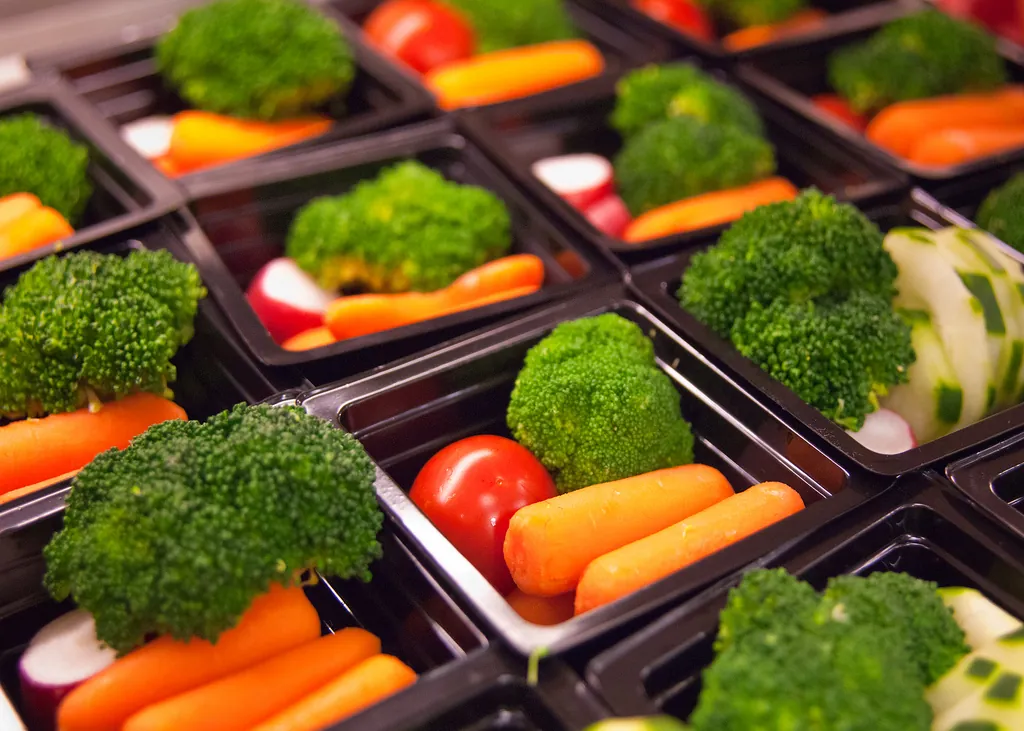
Meal planning takes almost no time to do, and saves you time later on. There’s more good news: You can meal plan around everyone’s schedules so you’re not the only one doing the cooking! Here are some of my do’s and don’ts when it comes to planning out your meals in advance:
Do: Pick a day of the week to brainstorm meals for the coming seven days. When you’ve chosen your meals, write them out on a calendar and list the ingredients that you’ll need.
Don’t: Lose or forget the recipes. Get a small folder or binder and keep all your recipes there. You can even get crazy and have different binders for different kinds of dishes. (Example: Meat dishes, pasta dishes, desserts…)
Do: Buy your ingredients fresh the week of. Go shopping at the beginning of the week after you’ve planned out all your meals so you’ve got the freshest produce possible.
Don’t: Be afraid to leave a night for leftovers. Don’t feel like you have to have a meal planned for every single night of the week. Leave a night or two open for leftovers.
Do: Keep basic kitchen necessities on hand. Make sure you always have olive oil, salt and pepper, lemons and limes, herbs, butter, and other extras in stock. It is very inconvenient to plan a meal, shop for the ingredients, and then realize you’re out of butter once you’ve gotten home.
Don’t: Think you can’t plan for all three meals. If you’re already planning and already shopping, why not plan breakfast and lunch too?
Do: Plan meals around everyone’s schedule. Plan so that the kids get home from school, start dinner, and then you get home in enough time to help finish, or vice versa!
Don’t: Underestimate the power of coupons. Create a few meals around what you have coupons for and what the store has on sale.
Do: Food prep. If you plan to make salads on Wednesday, prepare the fruits and veggies beforehand. Shred carrots, cut up cucumber, dice onions, and put it all in easy-to-store containers. If you’re making spaghetti on Friday night, make homemade sauce and store it in a jar in the refrigerator until you’re going to use it.
Don’t: Get too overwhelmed. If you need to start out meal planning for only three or four days a week and work your way up to six or seven days, don’t sweat it! Don’t think you have to jump right into this creating huge meals with a million fancy ingredients. Start with what you know. Start with your favorite recipes and slowly incorporate new recipes as you get more comfortable in the kitchen.
Meal planning can really help to keep your family organized and save time. Whether you’re meal planning all three meals or just dinner, know that in the long run you are creating a healthier food environment in your home! Good luck on your meal planning journey!
Kids Beware of Dessert!!!
By Kevann Jordan, Recent Arizona State University Nutrition Student
This article is for all those parents out there whose children love dessert and run from green foods. Let’s call it being a loving parent and not sneaky deceit (haha). I recently tried a chocolate mousse recipe made with avocados and it was delicious. My 7 year old loved it and my husband (the pickiest non-veggie eating human on earth) ate it at night while I was at work, little did they know it was made of avocado.

Avocadoes are one of my personal favorites. They are the perfect serving size and they are packed with nutrients. You can easily eat them anywhere and on almost anything. Avocados have a great supply of pantothenic acid, vitamin K (think green), folate, vitamin B6, copper, potassium, vitamin E and vitamin C. Plus copper and a wonderful supply of dietary fiber. Some argue that they are high in fat, which is true, but the fat is a “good” fat and the fat in this fruit helps your body absorb the fat soluble vitamins that it contains.
The fat in this fruit and its sweet nutty flavor is what gives it the incredible ability to be made into delicious nutritious desserts. My top 5 favorite avocado desserts are as follows (in no particular order).
#1. Avocado Lime Cheesecake Tart
Courtesy of: Fragrant Vanilla Cake
Yields: One 10-inch tart
Ingredients:
1 cup whole-wheat pastry flour
3/4 cup almond flour
1/3 cup maple sugar (or packed brown sugar)
1/4 teaspoon sea salt, plus 1 large pinch
6 tablespoons cold Earth Balance vegan butter (or organic butter)
8 ounces Neufchatel (or cream cheese)
1 cup avocado puree
1/2 cup agave nectar
2 large organic eggs, lightly beaten
1/4 cup Greek yogurt
1 tablespoon lime zest
Juice of 1 lime
1 tablespoon pure vanilla extract
Directions:
1. Preheat oven to 350 degrees. To make crust, in a small bowl, combine pastry flour, almond flour, sugar, and 1/4 teaspoon sea salt. Cut in butter until crumbly. Press crumb mixture into the bottom and up the sides of a 10-inch tart pan. Bake for 10 to 12 minutes, or until lightly browned.
- Meanwhile in a small bowl beat Neufchatel, avocado, and agave until light and fluffy, about 2 to 3 minutes, until no lumps remain. Beat in eggs, pinch of salt, yogurt, lime juice and zest, and vanilla until blended. Pour filling into prepared crust and bake for 30 to 40 minutes, or until filling is set and barely jiggles in the center. Cool on a wire rack for 1 hour. Refrigerate for at least 2 hours, but preferably overnight.
#2. Spiced Chocolate Avocado Cupcakes with Ganache Frosting
Courtesy of : Big Cake Theory
Yields: 24 cupcakes
Ingredients:
For cupcakes:
1 large avocado
1/4 cup vegetable oil
1 teaspoon vanilla extract
1 teaspoon ground cinnamon
2 tablespoons ground ginger
1/4 teaspoon cayenne pepper
1 cup white sugar
1 cup brown sugar
3 cups all-purpose flour
1 tablespoon baking powder
1 teaspoon baking soda
1/2 teaspoon salt
1 cup water
1/2 cup dark cocoa powder
1 1/2 cups soy milk
2 tablespoons white vinegar
For frosting:
2 avocados
1/2 cup maple syrup or honey
2 tablespoons dark cocoa powder
1 pinch salt
1/2 cup semisweet chocolate chips, melted
1 can (13.5 ounces) full-fat coconut milk
Directions:
1. Preheat oven to 350 degrees and line 2 cupcake tins with cupcake papers. In a food processor or mixer, mash avocado flesh until totally smooth. Add oil, vanilla, and spices and beat until completely mixed, about 3 minutes. Add sugars and beat until uniform, about 1 minute.
2. In a separate bowl sift together flour, baking powder, baking soda, and salt and set aside.
3. Boil water and whisk with cocoa powder until no lumps remain. Add soy milk and vinegar. Add dry and liquid ingredients to avocado mixture and mix until just combined. Pour batter into cupcake tins, filling cups about 3/4 full. Bake for 16 to 18 minutes, or until cupcake tops spring back when touched lightly and a toothpick inserted in the middle comes out clean.
4. While cupcakes bake, make frosting by pureeing avocado flesh in a food processor until smooth. Add maple syrup, cocoa powder, and salt and mix about 3 to 5 minutes, stopping to scrape the sides of the bowl as needed, until thoroughly mixed. Add melted chocolate and mix until combined. Open can of coconut milk and transfer thick coconut cream from the top to a separate bowl. Add remaining liquid to food processor and mix until completely blended. Using an electric mixer, beat coconut cream until light and fluffy. Beat into frosting until nice and fluffy, about 3 to 5 minutes. Allow to cool in fridge for 2 hours before piping onto cupcakes.
#3. Fudgy Vegan Brownies
Courtesy of: Pastry Affair
Yields: 16 brownies
Ingredients:
1/4 cup pureed avocado (about 1/2 avocado)
1/4 cup olive oil
1 cup whole-wheat flour
1/2 cup cocoa powder
1/2 cup granulated sugar
1/4 cup packed brown sugar
1 teaspoon baking soda
1/2 teaspoon salt
3/4 cup water
2 teaspoons vinegar (or lemon juice)
3 ounces semisweet or dark chocolate, roughly chopped
Directions:
1. Preheat oven to 350 degrees and grease an 8-by-8-inch pan.
2. In a large mixing bowl, stir together avocado and olive oil until smooth. Add flour, cocoa powder, granulated sugar, brown sugar, baking soda, salt, water, and vinegar and mix until smooth. Fold in chocolate chunks.
3. Pour into prepared pan, spreading batter evenly throughout pan. Bake for 15 to 20 minutes or until a toothpick inserted into the center comes out moist with a few crumbs but does not come out with runny batter. (Do not over-bake or brownies will have a cake-like texture.)
#4 Avocado Honey Ice Cream (a must try)
Courtesy of: Kibby’s Blended Life
Yields: 4 1/2 cups
Ingredients:
2 ripe avocados, peeled and pitted
1 young Thai coconut, water and meat (or 1 can organic full-fat coconut milk)
1/2 cup raw honey
1 dropper vanilla-flavored liquid stevia (or 1/4 cup maple syrup plus 1 teaspoon vanilla extract)
1 pinch sea salt
Directions:
Combine all ingredients in a blender or food processor until smooth. Pour into an ice cream maker and follow maker instructions, or pour into a storage container and freeze until firm, about 4 hours. Remove from freezer about 15 minutes prior to eating to let thaw a bit before digging in.
#5. Spiced Chocolate Avocado Mousse
(Warning this recipe is not for everyone. I LOVE spice and Mexican style chocolate with Chili)
Courtesy of: Divya Yadava
Yields: 2 to 4 servings
Ingredients:
2 avocados
4 1/2 tablespoons unsweetened cocoa powder
4 tablespoons honey or maple syrup
1 large pinch chili powder
1/8 teaspoon ground cardamom
1/4 teaspoon ground cinnamon
1 to 3 tablespoons milk
Raspberries, for garnish
Directions:
In a blender, combine avocado flesh, cocoa powder, honey, chili powder, cardamom, and cinnamon until mixed well, about 1 minute. Add milk as necessary, one tablespoon at a time, to achieve desired consistency. Taste and add additional honey or spices, if desired. (At this point, you may still be able to taste avocado. After chilling, avocado flavor will disappear.) Chill for 15 minutes in the freezer. Garnish with raspberries before serving.
Hope you will find a little treat that all of your family will enjoy!
Smuggling Veggies into your Kid’s Favorite Foods
By Lori Meszaros, Recent ASU Nutrition Communication student
As a parent, I want to make sure my kids are getting their 5 a day but with picky eaters in the house, that’s not always the easiest thing to do. I’ve tried all of the tricks, and while they sometimes work, some days my kids just want to eat pizza and chocolate.
I’m not alone in this fight to get our kids to eat healthier. Kids absolute refusal to eat fruits and vegetables has inspired many moms and chefs around the world to create deceptively delicious meals by becoming veggie smugglers, hiding that good stuff in their favorite food.

Whether it’s adding butternut squash to mac and cheese, cauliflower to mashed potatoes or using avocado to make chocolate mousse, some parents feel they have no other option but to sneak these good foods into their kid’s favorite culinary dishes. But is sneaking healthy food into our kid’s favorite dishes really teaching them healthy eating habits?
The USDA Dietary Guidelines recommends kids eat at least 5 fruits and vegetables a day. Adding pureed fruits or vegetables to meals is one way parents have found to help get their kids the recommended five a day, but health professionals are skeptical if it actually teaches healthy eating habits.
One study published in Social Science & Medicine found that hiding vegetables in meal can be confusing for a child. By adding pureed butternut squash or cauliflower to mac and cheese, children cannot easily distinguish between the homemade version with the hidden vegetable and foods served outside the home without the vegetable. While adding pureed vegetables can help increase the amount of vegetables eaten by children at home, it should not be the only way vegetables are presented to children if you want to encourage healthy eating habits away from home.
Another study published by Barbra Rolls at Penn State found that adding pureed vegetables to favorite foods almost doubled the amount of vegetables eaten by kids and had no effect on the amount of vegetables eaten as a side dish. While the researchers noted adding pureed vegetables can be beneficial to increasing the amount of vegetables eaten by kids, they also agreed it shouldn’t be the only way vegetables are served to children.
Research supports adding pureed vegetables to our child’s favorite dishes is a great way to help our children get their 5 a day, but caution it doesn’t support encouraging healthy eating habits outside of home unless the child is involved in the preparation of the food. Getting your children in the kitchen to help prepare their favorite dishes with these hidden veggies is the best way to encourage healthy eating in and away from home. I found this to be true with my own kids.
I began by sneaking in pureed vegetables into mashed potatoes, pizza sauces and yummy desserts to develop their tastes for these healthier options. I even made meat balls out of lentils, cauliflower and chicken, and after a few successful attempts at eating these veggie smuggled meals, I brought them into the kitchen to help me make them. My oldest, who wouldn’t give an avocado a second look, was shocked that her favorite chocolate mousse was made with this green fruit she despised (don’t worry, I share the recipe below), and my youngest who wouldn’t eat anything on her plate if the cauliflower touched it now cleans her plate that is filled with those little white trees.
Getting your kids in the kitchen will not only help encourage healthy eating habits but will also give them the skills to cook healthy meals once they leave home and start their own families. Cooking is a lost art and every child deserves to be taught how to cook. Start your kids young, even the smallest of hands can mix flour or pour in measured ingredients.
Avocado Chocolate Mousse
2 avocados
1 ripe banana
1 tbsp ground flaxseed
½ cup cacao powder, or unsweetened cocoa powder
½ cup creamy peanut butter
½ cup maple syrup or honey
¼ cup coconut milk or almond milk
Add all ingredients into a food processor and blend until creamy and smooth. Put mousse into a plastic zip bag and press to remove as much air as possible. Refrigerate for 1-2 hours.
I served mine in little chocolate bowls, but this can be served in small dessert dishes too. To serve, cut the corner tip of the plastic zip bag and squeeze mousse into serving dish. Garnish with a shaving of dark chocolate and enjoy.
The mousse will keep for about 3 days in the refrigerator, but is best right away.
Reference:
Connell PM, Finkelstein SR, Scott ML & Vallen B. Helping lower income parents reduce the risk of food waste resulting from children’s aversion to healthier food options: Commnet on Daniel. Soc Sci Med. 2016;150:286-289.
Rolls B. Hiding vegetables in kids’ foods can increase vegetable intake. Penn State, The College of Health and Human Development. Published July 20, 2011. Viewed November 7, 2016. http://hhd.psu.edu/news/2011/Vegetable-Intake.html
Edible Gardens
By Michael Russell, recent Arizona State University Nutrition Communications Student
I’ve written a previous blog post about backyard farming and staying within that theme I wanted to write about some tips on creating an edible garden. I understand that some of us may not want to go all out and start raising livestock in our backyards but the idea of fresh produce from your backyard is intriguing.
As much as you want a garden that will supply delicious vegetables or earthy herbs, you will also want a garden that is attractive to look at, so I will point out certain herbs and plant life that will give you an attractive garden. Let’s get started:

The “Wow” Factor:
As I mentioned above, we want an attractive garden as much as we want a productive garden, so here a few herbs and plants that will give you both, great visuals and fresh produce:
- Basil: It is an annual plant that comes in several types that can brighten up any garden. Outside of the traditional green basil plant, there are some that are purple, for instance, the Red-Rubin, which are extremely attractive and pair well with other edible garden plants. It is also useful in many dishes to add flavor and bring in color.
- Fennel: This perennial plant has wispy fronds that stand tall and add movement to your garden. The plant itself is a has a refreshing licorice flavor that is a great digestive after a heavy meal.
- Artichoke: These beautiful and large plants sprouts visually stunning purple plants that make any garden burst alive with color. There softball size buds are wonderful to eat in several ways. My personal favorite is to stuff the leaves with garlic, breadcrumbs and chunks of parmesan cheese and steam them for 2.5-3 hours.
- Sage: This plant does extremely well in the desert so it is great for any edible garden in Arizona. Its low mounting profile makes it wonderful for the front row of your garden. It’s velvety soft leaves give it a cozy and welcoming feel. It pairs nicely with most poultry and can lift any egg dish to new heights.
- Succulents: These plants are great for the gardens that people start in Arizona. Given the plant’s ability to survive in a desert environment, it will do well in the garden you create. They span a wide range of color and size so fell free to pair them with the sage to give a contrast of both.
- Thyme: Thyme is a bunch plant that will take up space but bring in a soft and warm feeling to your garden. Using purple basil, as mentioned above, to edge out the puffy thyme plant can be visually stunning. Thyme is a great herb that can enhance the flavor of several dishes.
- Peppers: Another plant that grows great in Arizona are peppers and given the variety at our fingertips the choice is yours. With several color options pepper plants bring life to the garden with their ability to dot color all throughout the garden. As for its culinary use, you have just as many options as you do plant types. You can make fresh salsa, create your own chutneys, pickle them, roast them, or just eat them raw.
- Tomatoes: Just as versatile, in both variety and color, the tomato is another great plant for the desert environment. Growing tall, with support from a tomato cage, this plant adds color and height to your garden. Used in just about any type of culinary dish, the tomato, will supply you with endless flavor and heartiness.
- Mint: This low bunching plant is a great addition to your edible garden. It will take up space and provide you a bright and glossy leaf that is both beautiful and aromatic. Great for desserts, mint, works well in hot and cold teas. If you’re into a harder beverage fresh mint from your garden makes a mojito that much more enjoyable.
- Leaf Lettuce: Leaf lettuce is a wonderful addition to and edible garden. Known for its ability to sprout into loose rosettes instead of a head this plant will give you fullness with color. There are several different leaf lettuces that will add color and give you different flavor profiles.
- Others to consider: There are several other edible plants that will make any garden look beautiful but also supply the grower with great produce, some to consider are:
- Sweet Corn
- Cucumber
- Eggplant
- Watermelon
- Cilantro
- Swiss Chard
- Kale
Keys to success:
Now I understand that our desert environment may make it intimidating to start a garden so I would like to supply you with several tips to make a successful edible garden here in Arizona:
- Be realistic: Gardening is hard work and you must be willing to see your crop grow and die. Not everything you plant will grow to full maturity and that is fine because you can take what you learned and apply it to the next set of crops you plant. Understand that the most experienced gardeners deal with failure so you are not the reason plants might die. Gardening is like gambling, you have to play the hand that you are dealt, sometimes it works out and other time you lose your shirt.
- Hard work pays off: In the beginning, you will be putting in a lot of hours and some hard work but as your garden grows all that hard work will be worth it. The hardest part is the first dig, but once your back and knees recover gardening becomes a rewarding endeavor.
- Plan it out: A key to success with anything you do is to have a plan set in place and gardening is no different. Understanding what to grow, how long it will take to harvest, where to grow it and how much space you will need is paramount for success.
- Full sun: When starting your garden, it is advised to start with an area that gets full sun. I know that seems crazy because, especially out here, things tend to die in the sun but plants want full sun. Remember you can always shade your plants once they get rooted but if your plants do not have full sun in the beginning then they are more likely to die.
- Keep your soil aerobic: Keep your soils full of oxygen-loving organisms. Great ways to promote the life of these organisms is to avoid under and over watering your plants and keep your soil fluffy.
- Mulch it up: Out here, mulch is our friend. Mulch is great for our gardens in Arizona because it keeps the sun off the soil which will cause it to dry out quicker and will also help to retain moisture.
- Slow and deep irrigation: It is best to use an irrigating system for watering as we tend to under-water in the beginning and over watering thereafter. If the roots of the plant do not get sufficient water, at first, the roots become dry and brittle and will be less likely to take hold and form a strong base for plant growth.
If you liked this article:
– 10 Apps for Arizona Gardeners
REFERENCES
- New edition of gardening bible for a gardener’s paradise. 2016. Available at:
http://www.berkeleyside.com/2012/03/29/gardening-book-booksource/. Accessed February 19, 2016.
- McKinely J. Keys for Successful Desert Gardening – Edible Baja Arizona Magazine. Edible Baja
Arizona Magazine. 2013 Available at: http://ediblebajaarizona.com/keys-for-successful-desert-gardening. Accessed February 19, 2016.
- 7 edible garden ideas. 2016. Available at: http://www.sunset.com/garden-basics/7-
edible-garden-ideas/basil-plus-thyme. Accessed February 19, 2016.
- 21 best crops for your edible garden. 2016. Available at:
http://www.sunset.com/garden/fruits-veggies/best-vegetables-fruit-herbs-to-plant/view-all. Accessed February 19, 2016.
Everything you need to Plan Christmas
By Lauren Scott, Arizona Farm Bureau Intern
From budgeting to cooking to decorating, we’ve got it all. We did the work of compiling this list, now the only thing you have to do is look through, find what you need, and plan the best Christmas ever!
You don’t need to be traditional. Treat your guests to a special Christmas dinner with Arizona Prime Rib, and finish your day with this amazing pumpkin pie cake. Take a look at some of the blogs below to see what other delicious holiday recipes Fill Your Plate has to offer.

- The Traditional Christmas Dinner is all Arizona Agriculture
- What is on your Christmas Day Dinner Plate?
- Farming Family Holiday Traditions
- 12 Holiday Dishes you Should add to your Table
- A Foodie’s Guide to the Winter Holidays
- Holiday Hacks
- Celebrate the Holidays with Arizona Wine
- Four Ways to Celebrate the Holidays Affordably
- How to get through the Holidays without Gaining Weight
- Holiday Gift Ideas for the Health Conscious
- Simple, Thoughtful Recipes work best for a Holiday Feast
- 6 Tips for Beating the Holiday Bulge
- How Holiday Checklists can Save your Sanity
- 5 Quick and Easy Holiday Desserts
- 7 Tips for Sticking to a Holiday Budget
- 20 Brilliant Breakfast Ideas for Holiday Mornings
- Great Ideas for Holiday Sweets and Treats
- 5 Tips to make Holiday Cooking Easier
- How to Host a Holiday Cookie Swap
We told you we have everything here that you need to plan Christmas! Share pictures with us on Facebook of your Arizona Christmas dinner. If you’ve got any other holiday tips or recipes you want the world to know about, share them with us in the comments!
12 Non-Traditional Thanksgiving Recipes
By Lauren Scott, Arizona Farm Bureau Intern
Thanksgiving is approaching fast, and whether you’re hosting the entire family or just a few friends, cooking can be a hassle. Putting together a full Thanksgiving meal takes a lot of preparation, and on the day of you might be cooking more than being with your guests. A way to make life easier on yourself around the holidays is to cook dishes that are more simple than traditional dishes.
You’ll impress your guests with your non-traditional Thanksgiving, and enjoy their company instead of slaving away over a stove for hours on end. Here I have a list of my favorite Fill Your Plate recipes that can be used for appetizers, main dishes, side dishes, and desserts; I hope you and your Thanksgiving guests enjoy them!
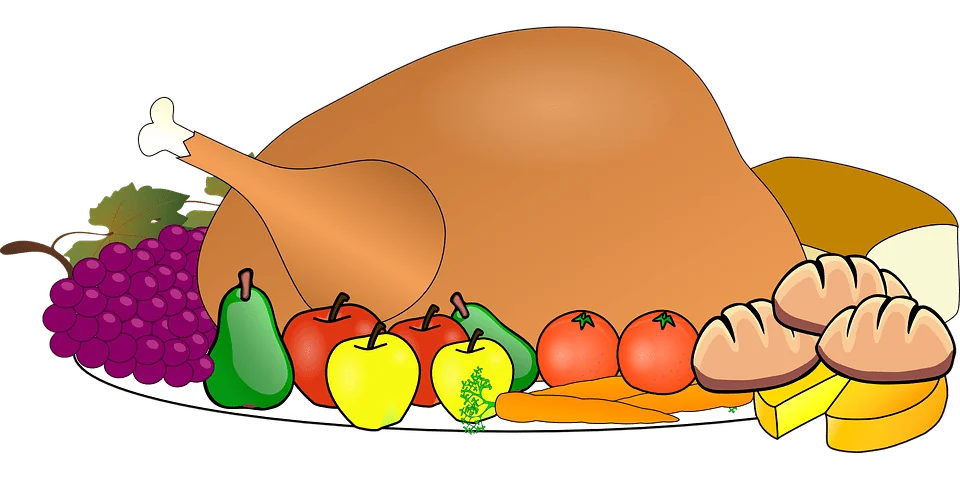
- Arizona Cornbread Chili Pie
- Orange Coated Yams
- Dru’s Special Stuffing
- Stuffed Pumpkin
- Sweet Corn Casserole
- Popping Cranberry Sauce
- Lentils and Smoked Turkey
- Arizona Rancher’s Prime Rib
- Citrus-Marinated Grilled Turkey
- Grandma Gertie’s Pumpkin Pie
- Grandma Howard’s Apple Pie
- Harvest Pumpkin Bars with Icing
Create the tastiest Thanksgiving dinner you and your family have ever had with this non-traditional menu. Check out the recipe section on fillyourplate.org, as well, for more delicious recipes!
Two Must Have Kitchen Gadgets for under $15
By Lori Meszaros, ASU Nutrition Communication Student
Kitchen gadget essentials can run the gambit. But two I can’t do without following. And, they are essential tools for me because I cook with citrus quite a bit.

- The Juice Press
No matter if you need lemon juice for a recipe or lime juice for a cocktail, a juice press is the all-in-one, handy gadget everyone should have in their kitchen drawer. They’re small, easy to use and most importantly, clean-up is a breeze.
The lemon water and juicing fad has come, and for the most part stuck around, but let’s face it, clean up can be tiresome and juicers can be expensive. Sometimes the benefits of juicing don’t outweigh the headache of having to tear the machine apart to clean it.
For under $15, a juice press can take that stress away. Plus, pressing juice has shown to retain more of the vitamins and minerals in the citrus than using a high-speed extractor like the expensive juicers you find in the stores.2
I can’t live without my juice press and it’s easy enough for my kids to use. They love making homemade lemonade and I love that I don’t have to strain the pulp from the juice when they are done! The juice press just presses out the juice, leaving the seeds and pulp behind for an easy clean up.
But don’t be too quick to throw out the citrus peel just yet.
- The Citrus Zester
A citrus zester is the next must-have gadget in your kitchen drawer and can be purchased for under $15. After making my fresh citrus margarita, I like to use the peel of the lime to make a zesty almond treat that’s a nice, healthy alternative to the normal chips and salsa.
The skin of citrus contains loads of beneficial vitamins and minerals and adds that extra kick to marinades and desserts. Try adding lime zest to your next marinade, or why not try this tasty almond snack.
Chili Lime Almonds
2 cups whole almonds
zest of 2-3 limes
1 tbsp. chili powder
½ cup brown or coconut sugar
¼ cup maple syrup
Heat oven to 350F.
Mix all ingredients, then roast on a lined cookie sheet for about 8 minutes, or until browned. Sprinkle with a little sea salt and enjoy a healthy, zesty snack.
Citrus, like lemons and limes, are little nutrient dense powerhouses loaded with vitamin C, B-complex, calcium, magnesium, potassium and iron that help give your immune system a nice little boost. Adding lemon or lime juice to your daily drink may also help play a role in your health by lowering blood pressure, preserving brainpower, and reducing your risk for certain cancers.1
Lemon water first thing in the morning. Infused water throughout the day. A squeeze of lime in your cocktail at night. Citrus is that flavorful touch we crave to brighten up our drinks. Here are a few recipes to try using the gadget you absolutely must have in your kitchen drawer.
Ginger lemon water
1 lemon, juiced
1 cup hot water
1 tsp honey
2-3 thinly sliced pieces of ginger
1 cinnamon stick
Let lemon, water, honey, ginger, and cinnamon steep for 1-2 minutes, or until cool enough to drink. Ginger Lemon water is great for your throat when you feel you’re coming down with something or need that little pick me up in the afternoon.
Infused water- lemon and cucumber with mint
½ lemon, juiced
2 lemon slices
4-6 slices of cucumber
1 sprig of mint, leaves only
Add all ingredients to a water bottle filled with filtered water to enjoy this refreshing infused drink.
Fresh citrus margarita
1 shot tequila
1 lime, juiced
1 small orange, juiced
1 tsp agave nectar or sweetener of choice
½ cup coconut water
Pour all ingredients over ice, garnish with a lime wedge.
Arizona grows some of the best citrus in the country and you can find an abundance of citrus at your local farmer’s market from December to April. Here are just a few of the recipes from Fill Your Plate you can use your new juice press on.
Armenian Cucumber – Tomato Salad
Catherine’s Stuffed Nasturtium Leaves
Chicken W/ Shallot Cream Sauce
Citrus Marinated Grilled Turkey
Grandma Nell Hickman’s Christmas Pie
Hickman’s Jalepeno Bacon & Egg Bake
Tri-Colored Penne w/ Cherry Tomatoes & Cheese
If you liked this post:
– Tips for Sharing the Kitchen
– 5 Things you can do in your Kitchen to make Cooking Easier
Reference
- Lorente, J. et al. Chemical guide parameters for Spanish lemon (Citru limon (L.) Burm.) juices. Food Chem, 2014;162:186-191.
- Uckoo, R.M., Jayaprakasha, G.K., & Patil, B.S. Phytochemical analysis of organic and conventionally cultivated Meyer lemons (Citrus meyeri Tan.) during refrigerated storage. J Food Compost Anal. 2015;42:63-70.
Pumpkin, this Season’s Superfood
By Lori Meszaros, ASU Nutrition Communication Student
Pumpkins have always been known for their amazing ability to withstand carving and of course to make a pie, but now pumpkin is popping up everywhere. From Starbucks’ world famous Pumpkin Spice Latte, to pumpkin bread, snacks and even beer.
It’s fall and that means pumpkin season.
Pumpkins are taking center stage in the produce section of your local grocery store and farmer’s markets. From small and ornamental to the giant carving, pumpkins are everywhere! And that’s a good thing because this fruit is actually a powerhouse when it comes to nutrition.
Nutritional benefits of Pumpkin
- Loaded with Vitamin A, one cup of pumpkin provides the body with over 200% of your RDA, which is needed to maintain healthy skin and eyes, boost your immune system, and help protect you during cold and flu season.
- Pumpkin is a rich source of the antioxidant beta-carotene, which helps prevent fine lines and wrinkles, and research supports the idea that pumpkin may play a role in cancer prevention.
- Pumpkins are high in Vitamins C and E
- Good source of fiber with more Potassium than a banana which is good for your heart. Fiber has been shown to reduce LDL “bad” cholesterol, and Potassium plays a crucial role in heart health.
- Pumpkins are a good source of complex carbohydrates, providing the body with an excellent source of energy. Helps regulate blood sugar due to low glycemic load which is important to anyone with diabetes.
- Research supports Pumpkin can help relieve the symptoms of arthritis due to its anti-inflammatory substances and has been shown to benefit the symptoms of bronchial asthma (Pitchford, 2002 & Yadav et al. 2010).
- 1 cup of pumpkin has only 49 calories and has no fat or cholesterol.
Adding pumpkin to your diet is easy and doesn’t just have to be limited to desserts and snacks. Try substituting your normal roasted vegetables with some roasted pumpkin. I love to add roasted pumpkin to my salads.
This Roasted Pumpkin and Chickpea Salad is one that I made for Thanksgiving dinner. I’m usually responsible for making the pumpkin pies, but last year I wanted to mix things up a bit. My guests loved the twist and were pleasantly surprised by the pumpkin making an appearance before dessert.
Roasted Pumpkin and Quinoa Salad
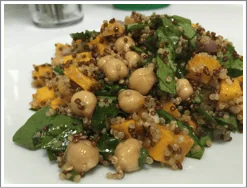
Ingredients
2 cups Butternut pumpkin/squash
2 cups Chickpeas, drained and rinsed
2 cups cooked quinoa
2 cups torn spinach
1 small red onion
1 tsp sea salt or rock salt
1 tsp chili powder (optional)
Marinade
2” piece ginger, peeled
1 garlic clove
1-2 small red chilies, deseeded if mild or leave in seeds for hot
1 tbsp. veggie stock concentrate or 1 bouillon cube crushed
⅓ cup water
Dressing
2 tbsp. balsamic vinegar
4-5 tbsp. cold pressed olive oil
1 tsp Dijon mustard
1 tsp agave nectar or honey
Method
- Preheat oven to 400F
- Start by preparing the marinade. Put all ingredients in a NutriBullet or high-speed blender. Blend until smooth.
- Cut pumpkin into bite size pieces, add to a mixing bowl with marinade and toss to coat.
- Place coated pumpkin on a cookie sheet lined with baking paper and bake until a fork inserts easily, approximately 10-15 minutes. Once cooked, remove and set aside to cool.
- To make the dressing, add all ingredients to a small bowl and whisk until emulsified, set aside.
- Add cooked pumpkin, chickpeas, quinoa, torn spinach and red onion a bowl, then toss with dressing.
The salad is best served at room temperature.
Enjoy!
This salad is also a great source of plant protein. Quinoa is the only grain, or seed depending on how you see it, that contains all 9 essential amino acids that are needed to make up a complete protein. In addition, quinoa is a good source of unsaturated fat that contains more calcium than milk, along with being a very good source of iron, phosphorous, B vitamins and vitamin E (Pitchford, 2002).
For more pumpkin recipes go to Fill Your Plate.
References
- American diabetes Association, Glycemic Index and Diabetes. Viewed October 5, 2016. http://www.diabetes.org/food-and-fitness/food/what-can-i-eat/understanding-carbohydrates/glycemic-index-and-diabetes.html
- Harvard Health Publications, Heart failure and potassium. Viewed October 6, 2016. http://www.health.harvard.edu/heart-health/heart-failure-and-potassium
- National Cancer Institute. Antioxidants and Cancer Prevention. Viewed October 5, 2016. https://www.cancer.gov/about-cancer/causes-prevention/risk/diet/antioxidants-fact-sheet
- Pitchford, P. Healing with whole foods, 3rd 2002. North Atlantic Books. Berkley, CA.
- Self-Nutrition Data, Pumpkin. Viewed October 5, 2016. http://nutritiondata.self.com/facts/vegetables-and-vegetable-products/2601/2
- How fiber protects your heart. Viewed October 6, 2016. http://www.webmd.com/diet/features/fiber-heart#1
- Yadav, M. et al. Medicinal and biological potential of pumpkin: an updated review. Nutr Res Rev, 2010; 23:184-190.

About Lori
Lori’s passion for food began when she was a little girl. Growing up on a small farm in Goodyear, AZ, she would follow her grandpa around the garden and watch her grandma in the kitchen. Lori’s curiosity and love for gardening and cooking led her down the path to pursue her passions. After studying Nutritional Medicine in Australia, and now studying Nutrition Communication at ASU, Lori plans to continue her studies to receive her Masters in Nutrition, taking her knowledge into the classroom to educate young minds about the importance of their food choices. Lori has strong beliefs that the food choices you make directly impact your health and eating local, fresh produce is the best prescription to better your health. Lori dedicates most of her free time to creating all of her favorite dishes with healthy, whole food ingredients in hopes to encourage future generations to live healthy, active lifestyles one meal at a time.
Eat Your Fruits
By Lauren Scott, Arizona Farm Bureau Intern
This article is the second installment in a series
Part 1: Eat Your Veggies
Fruits are a very important part of a healthy diet, but it can be hard to fit them into your routine. You might often be on-the-go, or think you are too busy to prepare fruits for meals. Maybe you just aren’t a fan of fruit in the first place. That doesn’t change the fact that you’re body needs the nutrients that fruit can give you. Sometimes I can be at a loss for what to do with fruit just like you, but these Fill Your Plate articles have really saved me time, and helped me figure out where to fit fruit into my busy schedule.
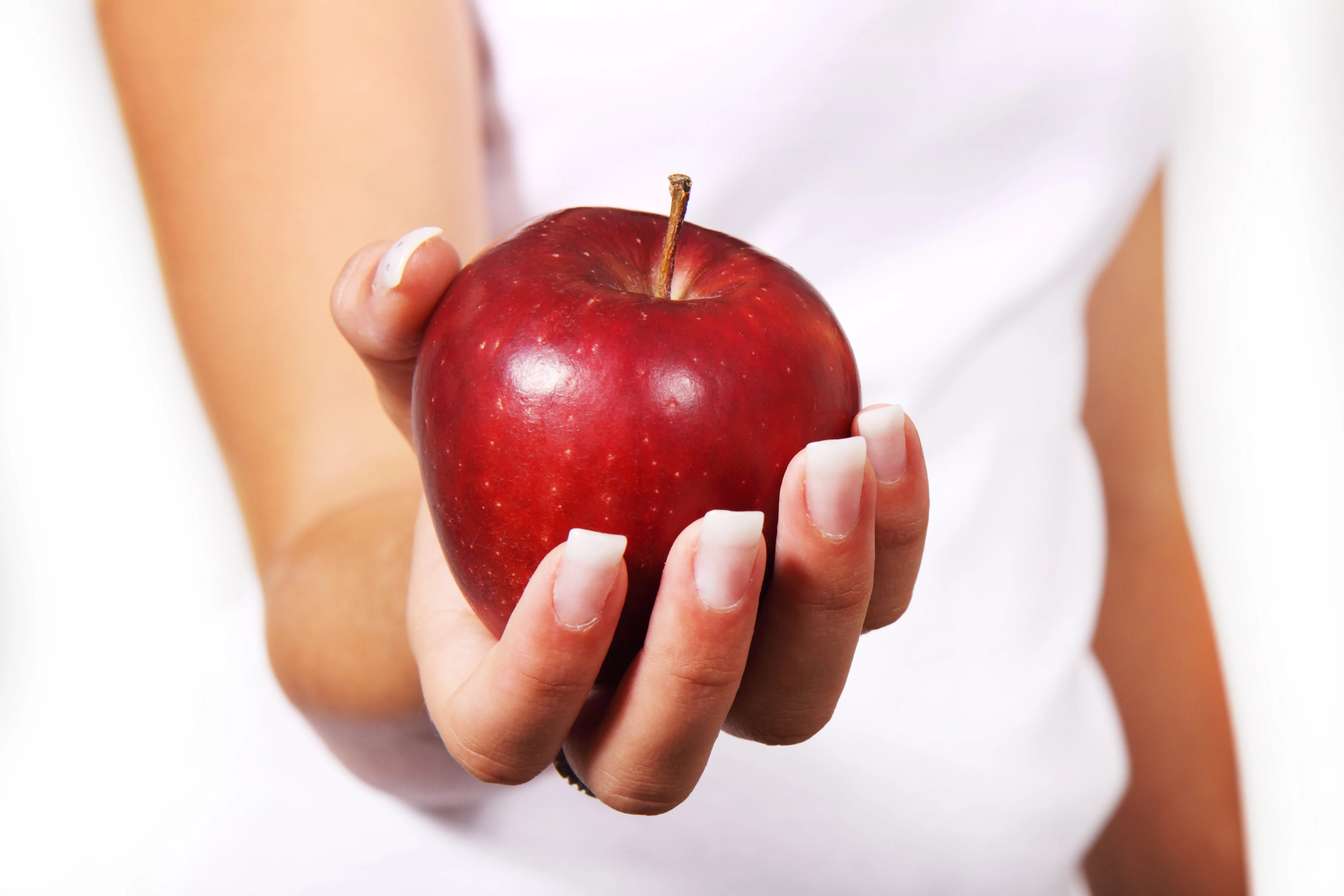
- Arizona Grows a Rainbow of Fruits and Vegetables
- What to do with all that Fruit?
- Fresh Arizona Fruit: More than just Desserts
- In-Season Smoothies
- Let’s Cook with Lemons
- 25 Ways to Eat Cherries
- Arizona Apples Start your day off Right
- 50 Ways to use Pears
- Arizona Oranges, Reaping the Sunshine
- Blackberries: A Sweet and Healthy Superfood
For more amazing fruit articles, head over to Fill Your Plate! There are also sections to help you find out what’s in season this month, and what recipes you should try. To help you get started, here are five of my favorite Fill Your Plate fruit recipes:
Fourth of July Favorites
By Lauren Scott, Arizona Farm Bureau Intern
To celebrate the Fourth of July, we’ll get together for barbecues, go camping, and head out to the lake with family and friends. Sometimes we stay home and bring the party to our house, and sometimes we would rather go out.

No matter the way we celebrate, everyone has something in common on the Fourth of July: food. There is a certain kind of food almost everyone eats on the Fourth. For lack of a better description, it is truly ‘all American.’ Hotdogs, hamburgers, baked beans, corn on the cob, watermelon, and lemonade. These are all popular foods to serve on this upcoming holiday, and they leave you with many choices of what to make or serve at your gathering.
To make things a little easier for you, I have compiled some of the tastiest Fourth of July inspired dishes we could find to make this holiday a breeze!
Crowd Pleasing Main Dishes
Appealing Appetizers
Refreshing Salads
- BBQ Pork Salad with Summer Fruits
- Chutney-Melon Chicken Salad
- Watermelon Salad
- Join the Party Salad
- Crunchy Apple Salad
Scrumptious Sides
- Apple Bacon Slaw
- Baked Corn Dish
- Deanna’s Potatoes Deluxe
- Garlic Roasted Summer Squash
- Southern Sweet Potatoes
Delicious Desserts
This lemonade is the tastiest drink I can recommend to make for your celebration, but make sure to drink plenty of water on the Fourth of July, as well. (Especially if you are spending time outdoors!)
I hope these recipes make your life a little bit easier on the Fourth so that you can spend less time cooking and more time hanging out with friends and family! If you want to check out more recipes, take a look at the recipe section on fillyourplate.com!
My Kid Won’t Eat That
By Laura Slatalla, ASU Nutrition Student
We all want our kids to eat their fruits and vegetables and grow up strong and healthy, but why do so many get stuck in a rut heating up some chicken nuggets every night? Kids can be picky eaters. The vegetables get denied. Carrots are tossed on the floor. We don’t want our kids going hungry, so it’s back to the foods they’re guaranteed to eat.

When we pressure a child to eat their vegetables it often has the opposite effect than intended. There’s a psychology behind eating, and even if we have to offer broccoli 50 times before a stalk makes it onto their fork, it can happen.
Here are some tips to helping expand your child’s eating habits that I’ve found work for me.
- Make dessert a part of the meal, rather than a reward. It’s okay if you kid only wants to eat the bowl of ice-cream. If we prize the dessert, the rest of the meal looks less appealing. Forbidden foods are more desirable. We don’t want the entrée to become a chore, but remember to offer desserts in moderation. Serve them in normal portions.
- Let your children help you cook. This sounds like a win-win situation for both parties involved, but sometimes we would rather get things done quickly or are worried about our children hurting themselves. This is a great time to slow down and spend some evening time as a family, while teaching the little ones how food gets prepared. Let them wash the vegetables. As they get older they can cut them up. They can stir. Children are way more likely to try a new food when they lend a hand in preparing it.
- Keep offering the foods they don’t like. It takes toddlers 10 to 15 times to decide if they like something. I’ve heard even higher numbers before, so keep putting it on their plate, even if they don’t eat it.
- Combine flavors they do like with the ones they don’t. Mix the vegetables they won’t eat in with the ones they will. It helps expose the foods in different recipes and combinations. Try sweetening some things, so they associate flavors they enjoy with the new food. They’ll be more likely to try it unsweetened.
- Make eating fun. Add lots of colors and shapes. Try new recipes. Offer a variety. Eating is enjoyable and exciting.
- Snack on fruits and vegetables. If I’m sitting on the couch with a mashed sweet potato my toddler is dying to try some. I do this with other thing she’s reluctant to try because if mom is snacking on it, she wants some too.
Try out a few of these tips to take the pressure off of meal time. Both parties will be more relaxed and one of these days your toddler will be hounding you for your broccoli. The whole family will be on their way to a more balanced diet. Good Luck!
Added Sugars and What They are Adding to Your Health
By Mariely Lopez, a Nutrition Communication Undergraduate at Arizona State University and additional contributions by Arizona Farm Bureau Staff.
Last Friday (May 20th), The White House released the first major update of the Nutrition Facts label for packaged food in more than 20 years, which will include, among other things, a line that states the amount of sugar added to the product during processing.
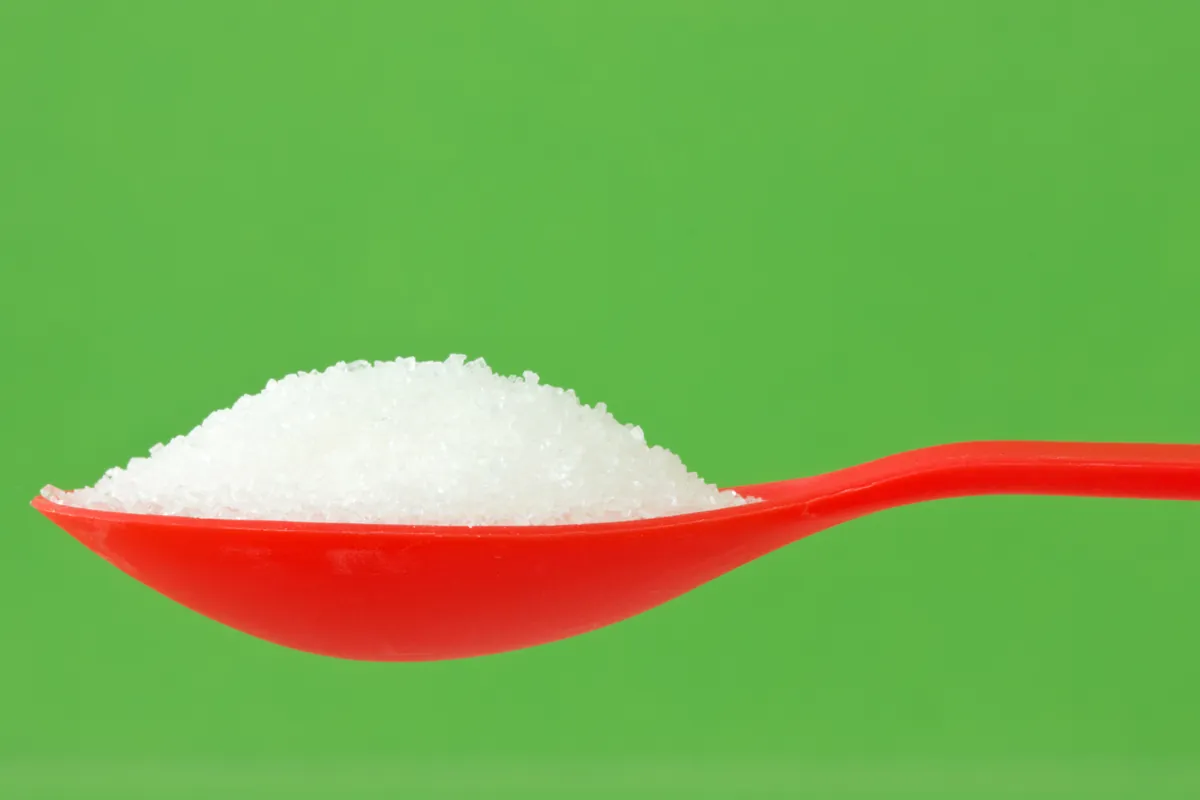
The American Journal of Clinical Nutrition and others had previously advised the U.S. Food and Drug Administration (FDA) to modify the Nutrition Facts Labels to include added sugars. A study conducted by the Journal, dating from 2003 to 2010, where participants were asked to recall their meals within the last 24 hours, concluded that by changing the labeling of foods that contain added sugar, to state that they contain added sugars, will help reduce added sugar consumption.
Currently, Nutrition Facts labels list the ingredients used and often times you can point out the added sugars, however, they do not tell you the amount of sugar added during the manufacturing process of the product. This now changes with the just released updated label requirements.
Adam Drewnowski and Colin Rehm stated, “There are concerns that excessive consumption of added sugars has contributed to the U.S. obesity epidemic. The potential links between intake of added sugars and obesity and other outcomes, including diabetes and cardiovascular disease, have become a matter of public health concern.” There is no doubt that added sugars are one of the key contributors that lead to chronic diseases, such as the ones Drewnowski and Rehm mentioned. Implementing the amounts of added sugars to food labels would increase awareness and will, in turn, help lessen the disease epidemic.
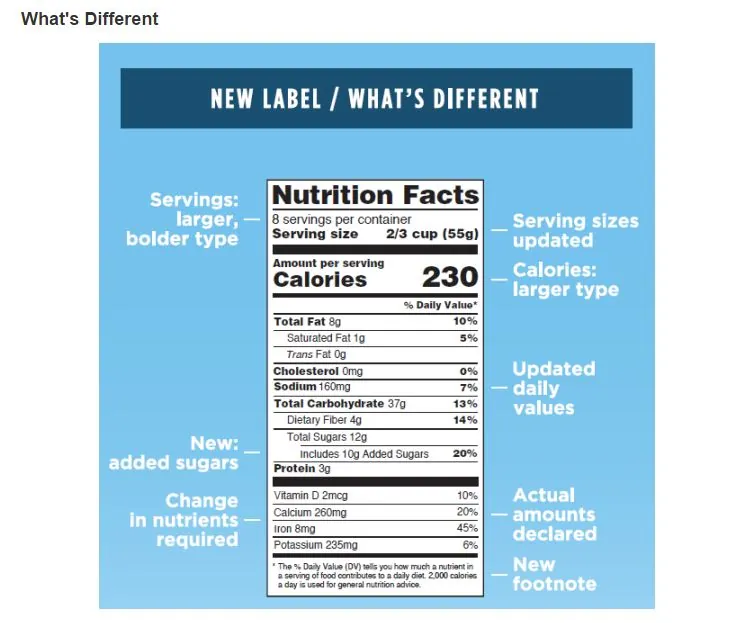
Most Common Products with Added Sugars
MyPlate.com defines Added Sugars as sugar or syrup added to processed foods and/or beverages, excluding any natural sugar found in fruits or milk. The following is a list of foods and beverages that may include added sugars:
- Energy drinks
- Ice Cream (Dairy desserts)
- Cake
- Pie
- Candy
- Donuts
- Soft drinks
Why are They Bad?
As stated above, added sugars are key contributors that may lead to chronic diseases, such as obesity, diabetes, and cardiovascular disease.
Obesity, as we all should be aware, is a growing concern in the United States. More than 68% of adults are considered overweight and about 35% are considered obese, according to Weill-Cornell Medical College research group. Most, of which, is due to the intake of high-calorie products and other contributing factors such as lack of physical activity, according to a study conducted at the New York Presbyterian Hospital. Added sugars, often times are the contributors to food products that are high in calories, for example, soft beverages. Soft beverages use added sugars and are a source of empty calories, which increase one’s chances of becoming overweight and/or obese. Becoming overweight and/or obese is linked to a number of other health complications.
One of the complications that are associated with obesity and high sugar consumption is type II diabetes. Type II diabetes is directly linked to glucose (sugar) levels and the body’s inability to produce insulin. Our pancreas produces insulin that helps maintain normal sugar levels, but over time it loses its ability to maintain our sugar levels at a healthy level due to the fact that we indulge in food products that are high in sugar on a regular basis; Basically our pancreas has trouble keeping up with our overconsumption and can no longer regulate our sugar levels, explains diabetes.org.
Another health complication is cardiovascular disease. Cardiovascular disease is the leading cause of death among older adults and it is due to the plaque build-up in the walls of the arteries. Plaque is made up of cholesterol in combination with fat, calcium, and other substances, according to the American Heart Association. Now, you may be asking yourself, “How is this connected to the amount of sugar I consume?” Well, here’s why: When we indulge in foods that contain high amounts of added sugar our body uses only some of it for energy and the rest is turned into fat. This fat then gets sent to different areas in the body, one of them being our arteries that can lead to cardiovascular disease.
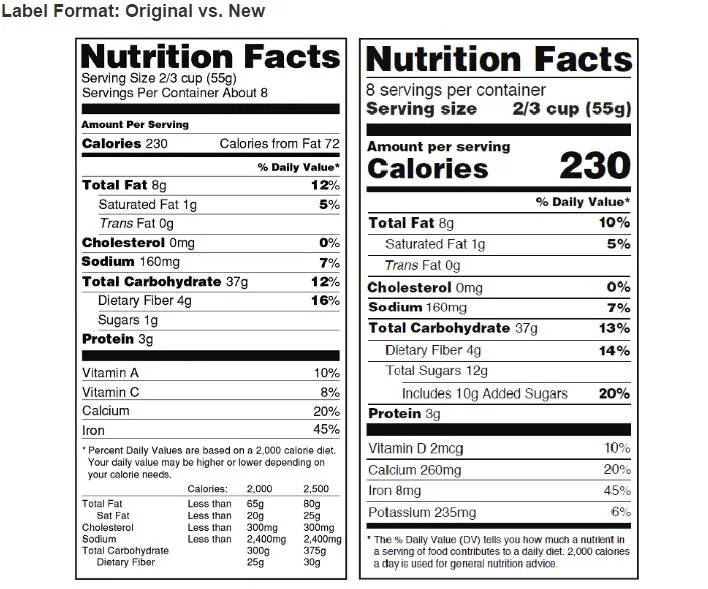
How to Spot Added Sugars
Identifying added sugars in foods and beverages is vital to minimalizing our intake of them. Below you will find a list of the names that are given to the most frequently used added sugars on labels:
- White Sugar
- Brown Sugar
- Honey
- Corn Syrup
- Maple Syrup
- High-fructose Corn Syrup
- Molasses
Beyond newly identify “added sugar” feature of the new labels, the FDA explains the major changes to the Nutrition Facts label include:
- An updated design to highlight “calories” and “servings,” two important elements in making informed food choices.
- Requirements for serving sizes that more closely reflect the amounts of food that people currently eat. What and how much people eat and drink has changed since the last serving size requirements were published in 1993. By law, the Nutrition Labeling and Education Act, requires that serving sizes be based on what people actually eat.
- Declaration of grams and a percent daily value (%DV) for “added sugars” to help consumers know how much sugar has been added to the product. It is difficult to meet nutrient needs while staying within calorie limits if you consume more than 10 percent of your total daily calories from added sugars, and this is consistent with the scientific evidence supporting the 2015-2020 Dietary Guidelines for Americans.
- “Dual column” labels to indicate both “per serving” and “per package” calorie and nutrition information for certain multi-serving food products that could be consumed in one sitting or multiple sittings. Examples include a pint of ice cream and a 3-ounce bag of chips. With dual-column labels available, people will be able to easily understand how many calories and nutrients they are getting if they eat or drink the entire package/unit at one time.
- For packages that are between one and two servings, such as a 20-ounce soda, the calories, and other nutrients will be required to be labeled as one serving because people typically consume it in one sitting.
- Updated daily values for nutrients like sodium, dietary fiber and vitamin D, consistent with Institute of Medicine recommendations and the 2015-2020 Dietary Guidelines for Americans. Daily values are reference amounts of nutrients to consume or not to exceed and are used to calculate the %DV that manufacturers include on the label.
- Declaration of Vitamin D and potassium that will include the actual gram amount, in addition to the %DV. These are nutrients that some people are not getting enough of, which puts them at higher risk for chronic disease. The %DV for calcium and iron will continue to be required, along with the actual gram amount. Vitamins A and C will no longer be required because deficiencies of these vitamins are rare, but these nutrients can be included on a voluntary basis.
- “Calories from Fat” will be removed because research shows the type of fat is more important than the amount. “Total Fat,” “Saturated Fat,” and “Trans Fat” will continue to be required.
- An abbreviated footnote to better explain the %DV.
“For more than 20 years, Americans have relied on the Nutrition Facts label as a leading source of information regarding calories, fat, and other nutrients to help them understand more about the foods they eat in a day,” FDA Commissioner Robert Califf said. “The updated label makes improvements to this valuable resource so consumers can make more informed food choices – one of the most important steps a person can take to reduce the risk of heart disease and obesity.”
Compliance will be required two years from today, the White House said. Manufacturers with less than $10 million in annual food sales will have an additional year to comply.
The new Daily Value for added sugars will be 50 grams, or about 12 teaspoons-an amount representing 10 percent of the daily 2,000 calories recommended for many adults. Once the rules are implemented, the Nutrition Facts label on a 20-ounce bottle of Coke, for example, would likely show that it had 130 percent of the added sugars limit for a day. The new labels will help consumers looking at labels for foods like yogurt, jams, or cereals know how much of the sugar comes from fruit or milk, and how much comes from high-fructose corn syrup or other added sugars.
The new label regulations will not apply to certain meat, poultry, and processed-egg products, which are regulated by the U.S. Department of Agriculture, not the FDA.
Some Good News
Many Arizona families, Americans in general, already have scaled back on sugar in the last several years due to the recognized health risks of too much sugar in our diets. As a result, food and beverage makers have made adjustments to the amount of sugar in their products.
As a result, some manufacturers and the Grocery Manufacturers Association says distinguishing between added and natural occurring amounts of sugar in a product that is then posted on labels is unnecessary because they have the same effect on weight gain. They contend that scientific tests can’t tell the difference, making it difficult to measure how much added sugar is in a food or drink.
As an example of food companies responding to Americans’ interest in less sugar, General Mills cut sugar in its regular Yoplait yogurt by 25% last year. Danone SA’s Dannon has cut sugar in its various yogurt brands and says three-quarters of its sales now come from products with 23 grams or less of sugar.
Ultimately, nutritionists continue advocating for Arizona families to take control of their own diets and seriously monitor their sugar intake. Regardless of labels, some simple ways to reduce sugar consumption exist. They follow.
- Stick to eating basic foods: fruits, vegetables, lean meats, dairy, eggs and whole grains.
- Reduce the amount of processed foods, such as packaged snack foods, you eat. For a sweet snack grab an apple or orange instead of a candy bar.
- Reserve cakes, cookies and other sweet treats for special occasions. We don’t have to deny ourselves but we certainly don’t have to have a bowl of ice cream every night.
- Avoid soda. Consuming sugary beverages are where in one drink we exceed our daily recommended intake of sugar.
References:
Drewnowski, A., and C. D. Rehm. “Consumption of Added Sugars among US Children and Adults by Food Purchase Location and Food Source.” American Journal of Clinical Nutrition. 100.3 (2014): 901-07. Web.
“Type 2.” American Diabetes Association. Web. 20 Apr. 2016. <http://www.diabetes.org/diabetes-basics/type-2/?referrer=https://www.google.com/>
“What Are Added Sugars?” Choose MyPlate. United States Department of Agriculture, 2015. Web. 24 Apr. 2016. <http://www.choosemyplate.gov/what-are-added-sugars>
“What Is Cardiovascular Disease?” What Is Cardiovascular Disease? American Heart Association. Web. 20 Apr. 2016. <http://www.heart.org/HEARTORG/Caregiver/Resources/WhatisCardiovascularDisease/What-is-Cardiovascular-Disease_UCM_301852_Article.jsp#.Vx1XKKODGkp>
Wright, Suzanne M., and Louis J. Aronne. “Causes of Obesity.” Abdom Imaging Abdominal Imaging 37.5 (2012): 730-32. Web.

